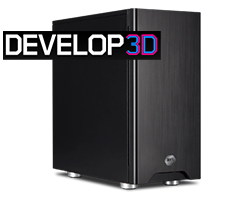SCANZONE
26.09.19 | ISSUE 64
It’s been an incredibly busy summer for computer engineers, with the launch of dozens of new major products. The most notable so far are AMD’s 3rd gen Ryzen desktop CPUs and its 2nd gen EPYC server CPUs, both of which are rewriting the rules for their respective markets. Read on to find out more about these amazing new processors, plus all of the other great new kit coming your way this summer.
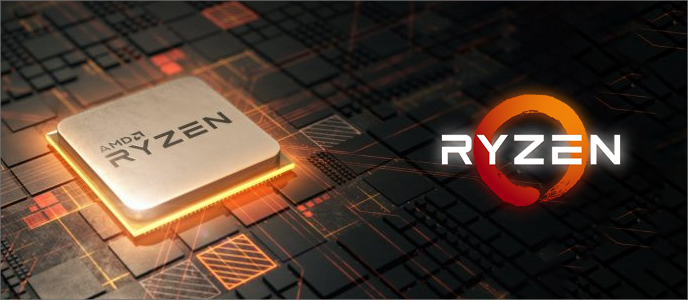
1. AMD Ryzen 3000-series CPUs
AMD’s 3rd gen Ryzen processors are here. We’ve benchmarked them, we’ve pulled them apart to find out what makes them tick. Continue reading to find out everything you need to know about one of this year’s most important product launches.
One of the things that helps a new processor to stand out from the crowd is how it’s made and with 3rd gen Ryzen, AMD has pulled out all the stops, making the new CPUs from 7nm transistors. That’s a big deal, because most CPUs are still made using 12nm or 14nm transistors, and smaller transistors means more performance, features and improved efficiency. To save on cost, AMD still makes some of the less performance-sensitive parts of the CPU, such as IOD from 12nm transistors, but the all-important CCDs are made using the new 7nm process.
There’s a new architecture too, codenamed Zen 2, which builds on the foundations of the original Zen and Zen+ architectures. Key standouts for Zen 2 are an improved AVX-256 unit that can now perform single-op floating point calculations, a doubling of the micro-op cache, a new branch predictor and a doubling of the Level 3 cache to 32MB per CCD.
All told, AMD claims these architectural improvements gives 3rd gen Ryzens 15% more IPC (instructions per clock) than 2nd gen Ryzens. Couple that with higher clock speeds and you’re in for a treat.
Finally, 3rd gen Ryzens are first CPUs on the market to support PCI-E 4.0. This doubles the transfer rate per lane from 985MB/s to 1.97GB/sec, unlocking more performance for compatible SSDs and GPUs. There’s also a new motherboard chipset X570, though you should be able to drop a 3rd gen Ryzen processor into most X470, B450, X370 and B350 motherboards, just check if there’s a BIOS update first. However, using these old motherboards you won’t be able to take advantage of PCI-E 4.0.
At launch there are five new 3rd gen Ryzen processors to choose between, ranging from the mid-range Ryzen 5s, high-end Ryzen 7s and an all-new ultra-high-end Ryzen 9. These tables highlight the key specs of these new processors and include 2nd gen Ryzen processors for comparison.
| CPU | Ryzen 9 3900X | Ryzen 7 3800X | Ryzen 7 3700X | Ryzen 7 2700X | Ryzen 7 2700 |
| Generation | 3rd | 3rd | 3rd | 2nd | 2nd |
| Cores / Threads | 12 / 24 | 8 / 16 | 8 / 16 | 8 / 16 | 8 / 16 |
| Base Frequency | 3.6GHz | 3.9GHz | 3.6Hz | 3.7GHz | 3.2GHz |
| Turbo Frequency | 4.6GHz | 4.5GHz | 4.4GHz | 4.3GHz | 4.1GHz |
| Level 3 Cache | 64MB | 32MB | 32MB | 16MB | 16MB |
| Memory Controller | Dual-channel DDR4 | Dual-channel DDR4 | Dual-channel DDR4 | Dual-channel DDR4 | Dual-channel DDR4 |
| PCI-E 3.0 lanes | 24 | 24 | 24 | 24 | 24 |
| TDP | 105W | 105W | 65W | 105W | 65W |
| CPU | Ryzen 5 3600X | Ryzen 5 3600 | Ryzen 5 2600X | Ryzen 5 2600 |
| Generation | 3rd | 3rd | 2nd | 2nd |
| Cores / Threads | 6 / 12 | 6 / 12 | 6 / 12 | 6 / 12 |
| Base Frequency | 3.8GHz | 3.8GHz | 3.6Hz | 3.4GHz |
| Turbo Frequency | 4.4GHz | 4.2GHz | 4.2GHz | 3.9GHz |
| Level 3 Cache | 32MB | 32MB | 16MB | 16MB |
| Memory Controller | Dual-channel DDR4 | Dual-channel DDR4 | Dual-channel DDR4 | Dual-channel DDR4 |
| PCI-E 3.0 lanes | 24 | 24 | 24 | 24 |
| TDP | 95W | 65W | 95W | 65W |
Intel CPUs have had the edge in single-threaded application and game performance for many years, and beating that was a principle target of AMD’s 3rd gen Ryzen architecture, Zen 2. Combined with an increase in clock speed and the introduction of Ryzen 9 processors with more cores, the new 3rd gen Ryzens have a lot going for them. Our benchmarks of the new 3rd gen Ryzens showed a marked improvement in both multithreaded and single-threaded games and applications. For instance, in Cinebench R20 the Ryzen 9 3900X proved an astonishing 43% faster than the Intel Core i9 9900K. AMD has also closed the performance gap in games with Intel’s desktop CPUs.
This great overall showing in all the benchmarks shows that the underlying Zen 2 architecture is a great all-rounder, something that AMD has struggled to deliver for many years. As such, the new 3rd gen Ryzens are well worth looking at whether you’re a gamer or workstation user.
Scan Computers sells the complete range of 3rd gen AMD Ryzen processors and X570 motherboards, while our expert engineers in 3XS Systems can build you an awesome new Ryzen gaming PC.
2. AMD 2nd gen EPYC CPUs
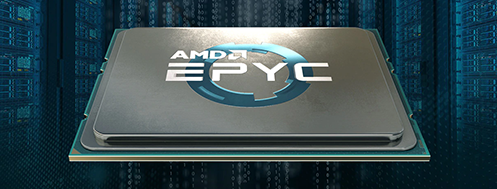
AMD’s new desktop CPUs, the 3rd gen Ryzens have been making a huge splash in the gaming market, outselling Intel in recent weeks. Similarly, with the introduction of the 2nd gen EPYC server CPUs, AMD is about to turn the server market on its head.
The new 2nd gen EPYC CPUs share the same base Zen 2 architecture as the 3rd gen Ryzens, and so benefit from much of the same goodness, including the new AVX-256 unit, massively improved IPC, industry-leading 7nm manufacturing process, PCI-E 4.0 and a massive increase in the number of cores. For instance, the flagship EPYC 7742 is armed with 64-cores and 128-threads, double that of the earlier EPYC 7601 and an astounding 129% more than the Intel Xeon Platinum 8280.
Such astonishing core counts are possible thanks to AMD’s hybrid multi-die design that combines up to 8 dies, each with up to 8 cores, together into a single CPU via the Infinity Fabric bus.
Here’s a quick comparison table between the new 2nd gen EPYCs and Intel 2nd gen Xeon Scalable-series.
| AMD 2nd gen EPYC | Intel 2nd gen Xeon Scalabale | |
| Maximum cores | 64 | 28 |
| Maximum threads | 128 | 56 |
| BPCI-E lanes | 128 | 48 |
| PCI-E generation | 4 | 3 |
| Memory controller | 8-channel | 6-channel |
| Maximum memory speed | 3200MHz | 2933MHz |
| Optane Memory support | No | Yes |
The new 2nd gen EPYCs are very impressive on paper, but do they live up to the hype? Testing the performance of servers is far harder than gaming PCs or workstations, as many benchmarks need to compiled for a specific CPU architecture in order to give optimum performance. Based on the results we have measured in our 3XS lab and independent reviews online the new 2nd gen EPYCs perform superlatively, setting dozens of new world records in benchmarks, such as 31,833 points in Cinebench R20. Other outstanding examples include the sign and verify testing in OpenSSL, which saw a pair of EPYC 7742s outpace a pair of Xeon 8280s by 102%!
The new 2nd gen EPYC CPUs aren’t just great for intensive HPC workloads though, thanks to having 128 PCI-E 4.0 lanes they’re also very well suited for storage servers, including software defined storage. Once server manufacturers get to grips with the new AMD platform, 2nd gen EPYC could also make a great platform for a GPU server.
Scan has partnered with Gigabyte to bring to market a range of new servers based on the 2nd gen EPYC CPUs. This include a flagship 2U HPC server with four dual-socket nodes, plus single and dual-socket 1U and 2U servers. Check out the links above for more details or email [email protected] to discuss your requirements.
3. NVIDIA GeForce RTX 2060, 2070, 2080 Super graphics cards

Things are heating up in the graphics card market with NVIDIA launching three new Super versions of its existing GeForce RTX 20-series. The three new cards are the 2060 Super, 2070 Super and the 2080 Super.
While not featuring any new tech or a die shrink, the new Super cards have more cores the original 20-series cards. For instance, the 2060 goes from 1920 cores to 2176 in the 2060 Super and also it gains a useful extra 2GB of memory. Meanwhile, the 2070 gets upgraded from 2304 cores to 2560 in the 2070 Super. Finally, the 2080 goes from 2944 cores to 3072 cores.
| Model | 2060 | 2060 Super | 2070 | 2070 Super | 2080 | 2080 Super | 2080 TI |
| Architecture | Turing | Turing | Turing | Turing | Turing | Turing | Turing |
| GPU | TU106 | TU106 | TU106 | TU104 | TU104 | TU104 | TU102 |
| CUDA Cores | 1,920 | 2,176 | 2,304 | 2,560 | 2,944 | 3,072 | 4,352 |
| Tensor Cores | 240 | 272 | 288 | 320 | 368 | 384 | 544 |
| RT Cores | 30 | 34 | 36 | 40 | 46 | 48 | 68 |
| Base Clock | 1,365MHz | 1,470MHz | 1,410MHz | 1,605MHz | 1,515MHz | 1,650MHz | 1,350MHz |
| Boost Clock | 1,680MHz | 1,650MHz | 1,710MHz | 1,770MHz | 1,710MHz | 1,815MHz | 1,545MHz |
| Memory | 6GB GDDR6 | 8GB GDDR6 | 8GB GDDR6 | 8GB GDDR6 | 8GB GDDR6 | 8GB GDDR6 | 11GB GDDR6 |
| Memory Controller | 192-bit | 256-bit | 256-bit | 256-bit | 256-bit | 256-bit | 352-bit |
| TDP | 160W | 175W | 175W | 215W | 225W | 250W | 250W |
We put NVIDIA’s new Super cards to the test, head to head with the original versions of the cards, along with AMD’s new RX 5700 cards. All the cards were tested in a 3XS gaming PC with an Intel Core i9 9900K CPU, Asus RoG STRIX Z390-F motherboard and 32GB of Corsair Vengeance 3000MHz memory. All the testing was done using the latest WHQL drivers from NVIDIA and AMD and all the games and benchmarks were run at 2560 x 1440 at the highest quality settings.



4. The best PC games from Gamescom

While the Gamescom show in Germany doesn’t have quite the same razzmatazz as the E3 show in the US, lots of developers and publishers used the show to demo new games and release trailers for games that aren’t quite ready to demo yet. Here’s our pick of the best new trailers.
Call of Duty: Modern Warfare

Control

CyberPunk 2077

Homeworld 3

Humankind

Knights of Honor 2

Minecraft

Kerbal Space Program 2

Vampire: The Masquerade - Bloodlines 2

Watch Dogs Legion

5. Reviews
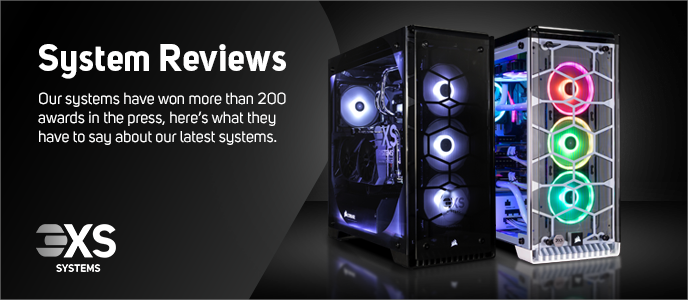
"A fine showcase of what a potent Ryzen build has to offer"
HEXUS has written a review of one of our new Ryzen 3000-series gaming PCs. Armed with an overclocked Ryzen 9 3900X, 32GB of 3600MHz memory, GeForce RTX 2080 Ti graphics and a 2TB PCI-E 4.0 SSD the whole system is custom watercooled. HEXUS liked what it say, writing that ‘the giant cube comes across as formidable and, as you'd expect from an enthusiast rig in 2019, there are lots of RGB lights and multiple radiators’. The review concluded that ‘Putting the best of AMD hardware to good use, the Scan 3XS Vengeance RTX Ti Fluid is a fine showcase of what a potent Ryzen build has to offer’ and gave the system a Performance Award.
The award-winning 3XS Vengeance RTX Ti Fluid water-cooled gaming PC is available for next-day delivery on our website now.
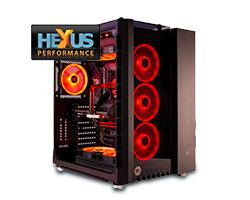
"Enormous speed for both content creation in gaming"
Custom PC magazine also reviewed a Ryzen gaming PC, this time an air-cooled system rather than a custom water-cooled PC. According to the review ‘the Ryzen 9 3900X is tremendous’ and ‘with its RTX 2080 Ti GPU, it also ripped through our gaming benchmarks’.
You can read the full review in the latest issue of Custom PC, and buy the Approved Award winning 3XS Vengeance RTX Ti PC on our website.
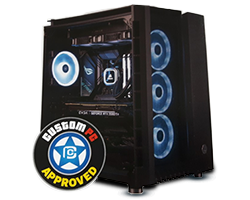
"A superb showcase for AMD’s Ryzen 9 3000 series"
PC Pro magazine also reviewed one of our new Ryzen 3000-series PCs, although this time a graphics workstation optimised for high-end 3D and VR applications. The key specs included an overclocked Ryzen 9 3900X, 32GB of 3200MHz memory, Quadro RTX 5000 graphics and a 2TB PCI-E 4.0 SSD. PC Pro wrote that ‘Our main interest with this system, is the CPU performance, and in this respect the WA4000 VR delivers – in spades’ and that ‘This is a brilliant all-round workstation, offering phenomenal image editing and video encoding, rendering in the class of last year’s 16-core systems and 3D modelling with no compromises.’
You can read the full review in the latest issue of PC Pro magazine and check out the 3XS WA4000 VR graphics workstation on our website.
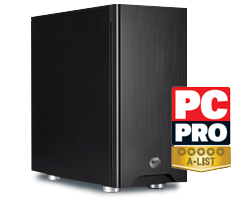
"Offering incredible performance, good build quality and impressive acoustics"
Develop3D also reviewed our Ryzen 9 graphics workstation, the 3XS WA4000 VR, writing that ‘In the V-Ray benchmark the Ryzen 9 3900X was 40% faster [than the overclocked Core i9 9900K]. We imagine you’d have to go up to the 12-core Intel Core-i9 9920X to beat the AMD Ryzen 9 3900X in a rendering test, but as noted earlier such a chip would cost more than twice as much.’ The review concluded that ‘It’s hard to find fault with the Scan 3XS WA4000 VR. It offers incredible performance and impressive acoustics. For around the same price, Scan offers an overclocked 4.9GHz Intel Core i9 9900K workstation. By choosing AMD over Intel, you’ll likely forgo around 10% of single threaded performance, but you should cut your render times by around 40-50%. For many, that will be a sacrifice definitely worth making. In addition, you could close the single threaded performance gap by not overclocking all 12 cores and boosting single core frequency by 0.3GHz.’
You can check out the 3XS WA4000 VR graphics workstation on our website.
